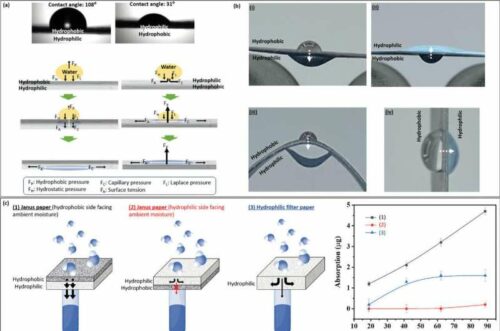Researchers at Binghamton University have developed a new paper-based wearable device that generates electricity by extracting moisture from the air.

Over the last ten years, wearable electronics, particularly those designed for healthcare applications, have surged in popularity. However, powering these devices remains a challenge for researchers. While commonly used, traditional batteries tend to be too rigid and have a limited lifespan under continuous use. Alternatively, wireless power transfer methods provide a solution but need more range and portability.
Binghamton University’s researchers have created a novel method that extracts moisture from the air to generate electricity. Their recent paper in the journal Small describes their development of a paper-based wearable device that harnesses moisture to deliver sustained, high-efficiency power output.
The researchers say that the generator employs bacterial spores as the active component to split water molecules into positive and negative ions. The paper’s capillaries draw in the spores, creating a gradient with a higher concentration of positive ions at the top than at the bottom, which generates an electric charge.
A Janus paper layer that is hydrophobic on one side and hydrophilic on the other is added to enhance moisture absorption. This layer attracts water molecules and retains them within the device for processing.
The ongoing research in papertronics aims to develop devices made entirely from paper that are flexible, wearable, scalable, and disposable, all while being environmentally benign. He views the moisture-electric generator as a breakthrough for applications such as low-power sensors, drug delivery, and electrical stimulation.
Future enhancements include boosting the power output, devising a method for energy storage, and combining this technology with other energy-harvesting techniques. Additionally, Choi aims to miniaturize the device to be comparable in size to micro-electromechanical systems (MEMS).
While many researchers are concentrating on developing long-term wearable devices, the research team is taking a different approach by prioritizing disposable devices designed to avoid contributing to electronic waste in landfills.






